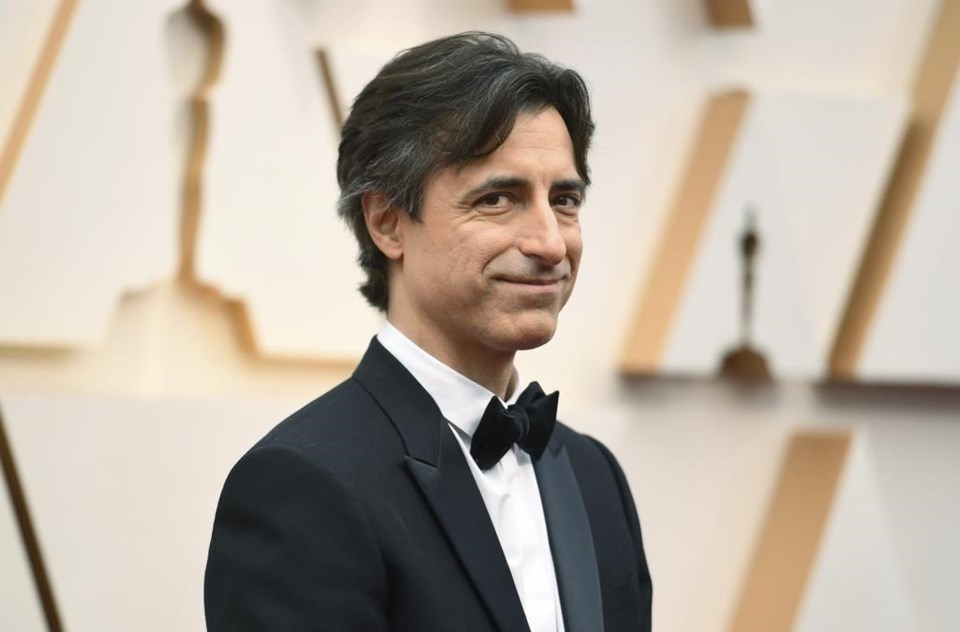It was early in the pandemic when Noah Baumbach, for the first time in his career, found himself wondering what he was going to do next.
2019 had been a big year, both professionally and in his personal life. He lost his father. He had a child, with partner Greta Gerwig. And both had big movies (his was “Marriage Story,” hers was “Little Women”) that had put them on a months-long awards circuit with an infant up until the Oscars.
When the world shut down, Baumbach picked up Don DeLillo’s 1985 classic “White Noise,” about a professor of Hitler studies at a generic Midwestern college, his blended family and the airborne toxic event that has everyone in a panic. In it he found a voice that was both inspiring and familiar and the themes a little uncanny in the context of the pandemic and he decided to try his hand at an adaptation.
Baumbach spoke to The Associated Press about making the film, which hits Netflix on Dec. 30 and stars Gerwig, Adam Driver and Don Cheadle, getting to dabble in different genres and how “Greta is always right.” Remarks have been edited for clarity and brevity.
AP: People throw around the word “unfilmable” a lot when it comes to “White Noise” and a lot of post-modern books. Did that mean anything to you?
BAUMBACH: No, I guess if I had known maybe I would have been more daunted. It always seemed filmable to me. I guess what people mean is that it’s very literary and extremely literary books seem like so much a book and something you can only do in literature. But this one had so many overtly cinematic elements.
AP: When it comes to the cinematic language used here, Spielberg’s name has come up often and so has Godard’s. Could you walk me through an example where you were referencing something specific?
BAUMBACH: Take the evacuation and the disaster element of the movie from part two. That has a real movie counterpart and a language that was available to me. Then Jack going to the motel later to kill a man is a very noir sequence. The kids talking in the car while the dad is trying to drive through the woods feels like a family comedy, with the put-upon father and everyone making demands that he can’t live up to. I thought it would be fun to embrace those movie elements. It was exciting to me because I haven’t had material that’s asked that of me.
AP: I was trying to think of whether you’ve even had a gun in any of your movies.
BAUMBACH: No one even says the word gun.
AP: Greta makes Babette, who is a tricky character, relatable and empathetic and profound. How did you figure out who she was going to be outside of DeLillo’s gaze?
BAUMBACH: I have the privilege of having Greta often sitting across the table from me while I’m writing. I mused aloud, “Who do you think would be good as Babette?” And she immediately said, “Me, I should play her.” And Greta is always right so I signed her up then and there. I think it gave me confidence in that Greta saw herself in the character. It allowed me to see that character in a clearer way. But in the book, you’re in Jack’s head so she’s more of a projection.
AP: The kids also become real people in the movie and provide some of the white noise, while also getting some of the best lines.
BAUMBACH: They were all so professional and also such kids at the same time, which is the best combination. I suggested to them that they were like a radio that was turned on at the beginning and then it’s just on for the whole movie. Whether they’re on camera or not, they’re still talking. For everyone, it was a bit like learning a song, knowing when to overlap, when it’s too much, when it becomes good white noise or kind of unappealing white noise.
AP: You used choreographer David Neumann not just for the dance at the end but for the crowd scenes and breakfast scenes. Had you worked that way before?
BAUMBACH: I kind of backed into it on “Marriage Story.” I had brought him into work on the theater stuff in that movie. In this movie I brought him in from the beginning because I had a feeling that, knowing it’s going to end with a dance, everything is kind of threatening to go into a dance from the very beginning.
AP: A lot of filmmakers and showrunners set their pandemic films in warm vacation spots like Greece and Sicily and Hawaii and you went to Cleveland in November.
BAUMBACH: A lot of people went back to their childhoods too. But I had already done that. I really was just following the novel and the logic of the script. I liked working in Ohio and the community there. People were excited about the movie and being in the movie and I used a lot of real families. I liked that there was a kind of enthusiasm that in my years of shooting in New York City I’ve watched dwindle. It used to be if I came back to Brooklyn to shoot, people would get excited. Now nobody’s excited.
—-
Follow AP Film Writer Lindsey Bahr on Twitter: www.twitter.com/ldbahr.
Lindsey Bahr, The Associated Press



